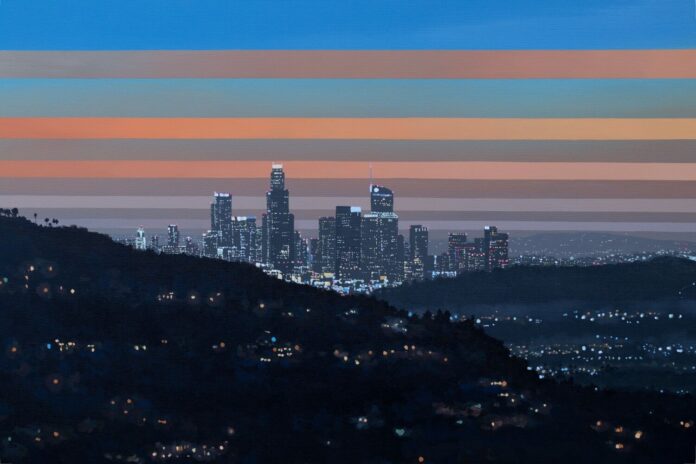
“Evening Mile: The Paintings of Julika Lackner” was born out of the pandemic and offers a new vision of familiar views from around Eagle Rock. Lackner’s exhibit, which opened at Forest Lawn Museum in Glendale Jan. 29, features scenes from the artist’s mile-long walks throughout lockdown as the sun would set and the city lights would begin to twinkle on the hills.
“I tried to capture that while we were all isolated from each other, through the twinkling lights we were so close,” Lackner said. “We’re all still here, even though we can’t see each other right now.”
Lackner said painting became a refuge for her throughout the pandemic. Instead of anxiously watching the news, she focused on her work. Throughout the process of painting her neighborhood, Lackner said she began to gain an awareness of those scenes and more fully understand those familiar places.
“I had never spent so much time actually looking at the silhouettes of the hills, and how many hills there are and the different colors they take on some nights,” Lackner said.
Paintings in the “Evening Mile” exhibit are distinctly marked by brightly colored striations across the sky or the surface of water, creating a sense of depth as the bands thicken and expand across the horizon. Palm trees and rooftops dominate the outlines of the topography. The silhouettes of the hillsides, which recede into background, glow with luminous multicolored orbs while streams of highway lights settle into the valleys.
James Fishburne, museum director at Forest Lawn Museum, said he and Lackner worked together to place the pieces within the museum’s architectural space while designing the layout around its permanent collection. In contrast to the marble and bronze statues of the museum’s permanent collection in the same room, Lackner’s art jubilates with color. In one alcove, the colossal head and foot of the museum’s copy of “David” by Michelangelo, made of luminous white marble, rests directly in front of Lackner’s 5-foot-tall paintings, which fill the space with bright blues and burnt reds.
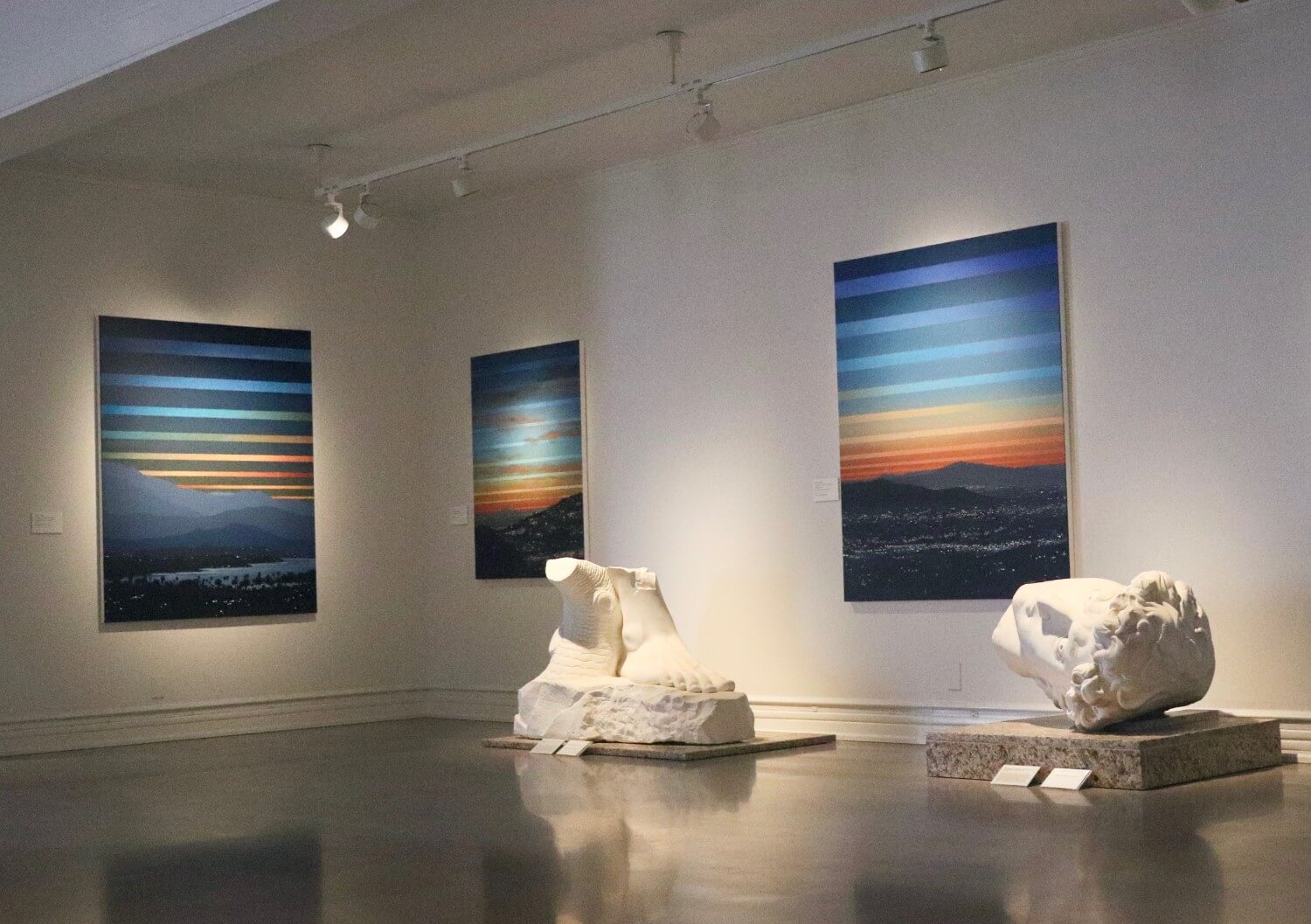
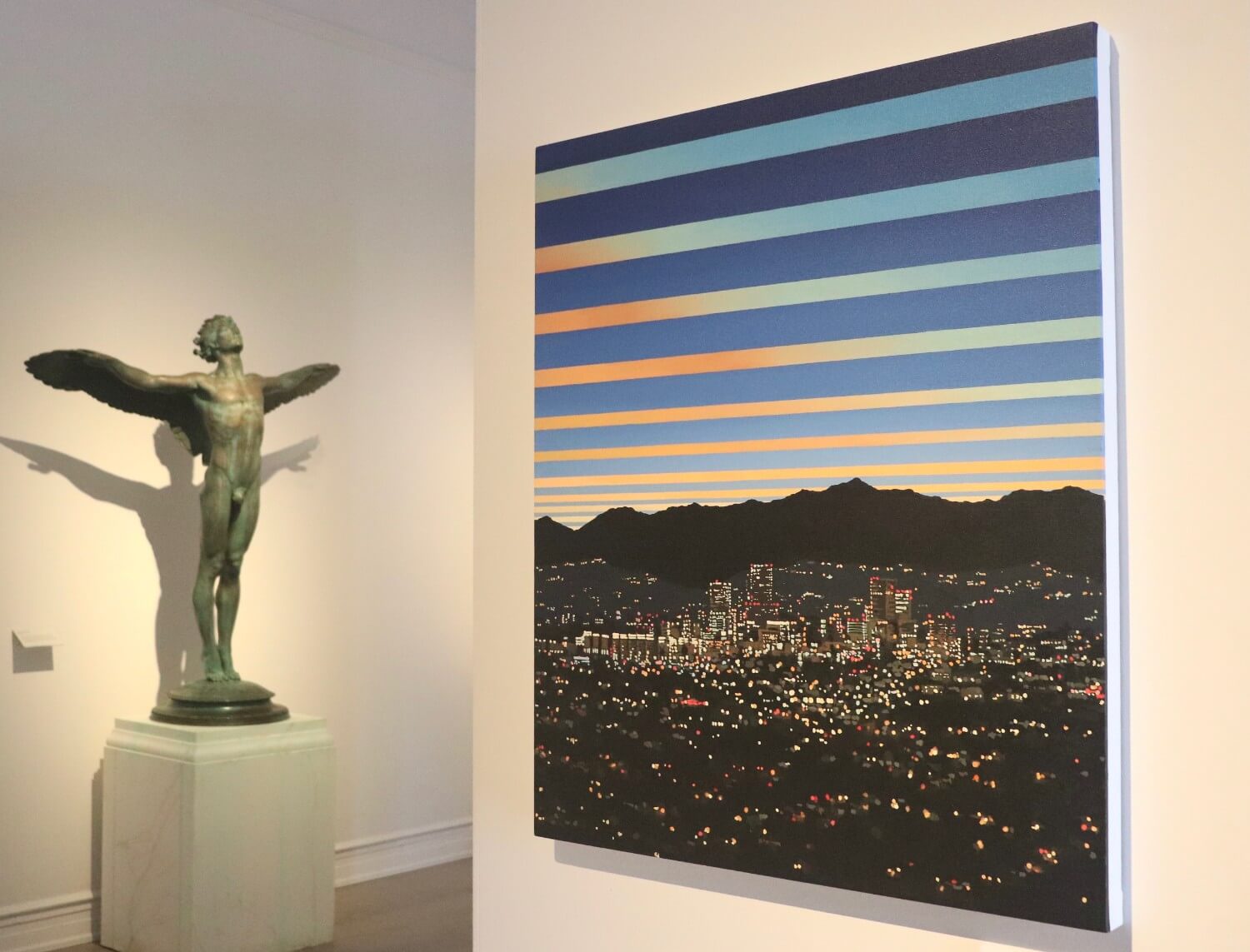
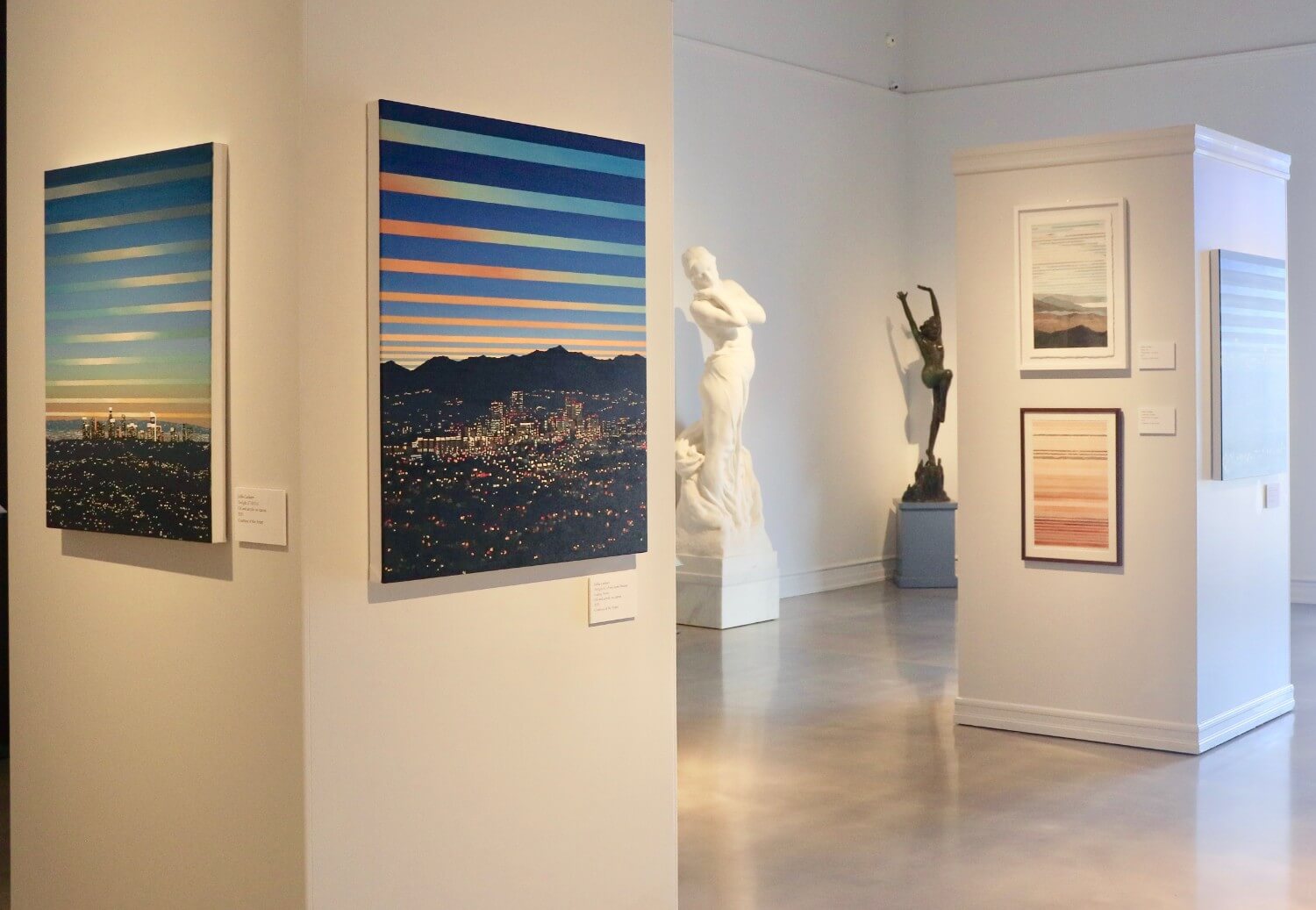
To quickly capture the colors of a fleeting sunset, Lackner said she relies on color studies, which she defined as distillations of the predominant colors of a scene onto a canvas. These studies let her play with the contrast and brightness of the shades and also enable her to work from those colors later while using a photograph as a reference if needed.
“I feel like I’m always trying to discern, ‘What color is that? How would I mix that in paints?’” Lackner said. “There’s nothing wrong with photos, but we’re so used to seeing photographic color that it’s important to find a different color language in painting.”
It is easy to use the word “black” as a catch-all for darkness, but the dark colors in Lackner’s paintings contain more than that. According to Lackner’s former professor at Art Center College of Design, Pasadena, Jeremy Gilbert-Rolfe, the standard color formula for painting the night sky is not black — it is a combination of ultramarine, blue and Van Dyke brown. Gilbert-Rolfe said Lackner would frequently visit his studio and they would paint the color of the sky together on stretch canvas. Then, they would take their canvases outside to test them.
“Holding [the canvas] up, when it disappeared into the sky, we knew we’d got the color right,” Gilbert-Rolfe said.
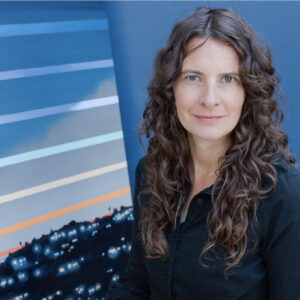
In addition to works painted at the start of the pandemic, the exhibit also features a few of Lackner’s earlier paintings, which display the progression of her career and her consistent fascination with artificial lights and linearized landscapes.
Jeremy Tessmer, the Gallery Director at Sullivan Goss in Santa Barbara, said he has been a fan of Lackner’s work since before he met her, when he visited his best friend who was housesitting for Lackner’s family’s home in Santa Barbara. After seeing her work displayed on their walls, Tessmer eventually connected with Lackner to exhibit her work at Sullivan Goss in 2008, and they have kept in touch ever since.
“Julika was a preternaturally gifted painter,” Tessmer said. “I later learned those were paintings she made when when she was 15 years old.”
Born in Berlin to an American father and German mother, Lackner spent much of her life moving back and forth between Berlin and California. The paintings Tessmer saw in Lackner’s family home depicted the blurry, chromatic lights of the urban cityscape in Berlin as seen from a car window coming home from the airport.
After graduating high school at 16, Lackner attended Santa Barbara City College, transferred to the University of California, Santa Barbara, studied for a time in Berlin and eventually received her MFA at Art Center College of Design in Pasadena.
“At [Art Center], it was not so much about learning how to paint or anything like that. We were supposed to know that at this point,” Lackner said. “It was really about what we were trying to get at in our paintings.”
During and shortly after college, Lackner began to experiment with abstract landscapes, and ways of depicting the motion of water and the atmosphere of clouds.
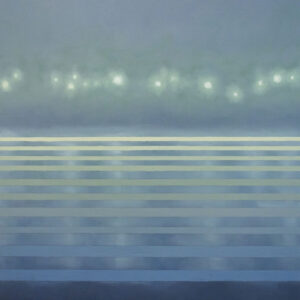
Over time, her body of work grew from a preoccupation with lights at night that started when she was 15 years old to a style that was very linear and conceptual — and then a joining of both.
“I think for artists, there’s a reconciliation between different ideas and bodies of work that happens in mature work,” Tessmer said. “And I think this [exhibit] is basically the result of a process that goes back 25 years.”
Fishburne said he was initially very attracted to Lackner’s attention to the qualities of both natural and artificial light, capturing the the sun setting behind the mountains as well as the lights of LA’s cityscape.
“I’ve lived in Southern California myself for almost 20 years, and I recognize those specific spots and it harkens back to great memories that I have in these spots — of great, great sunsets and sunrises that I’ve seen,” Fishburne said.
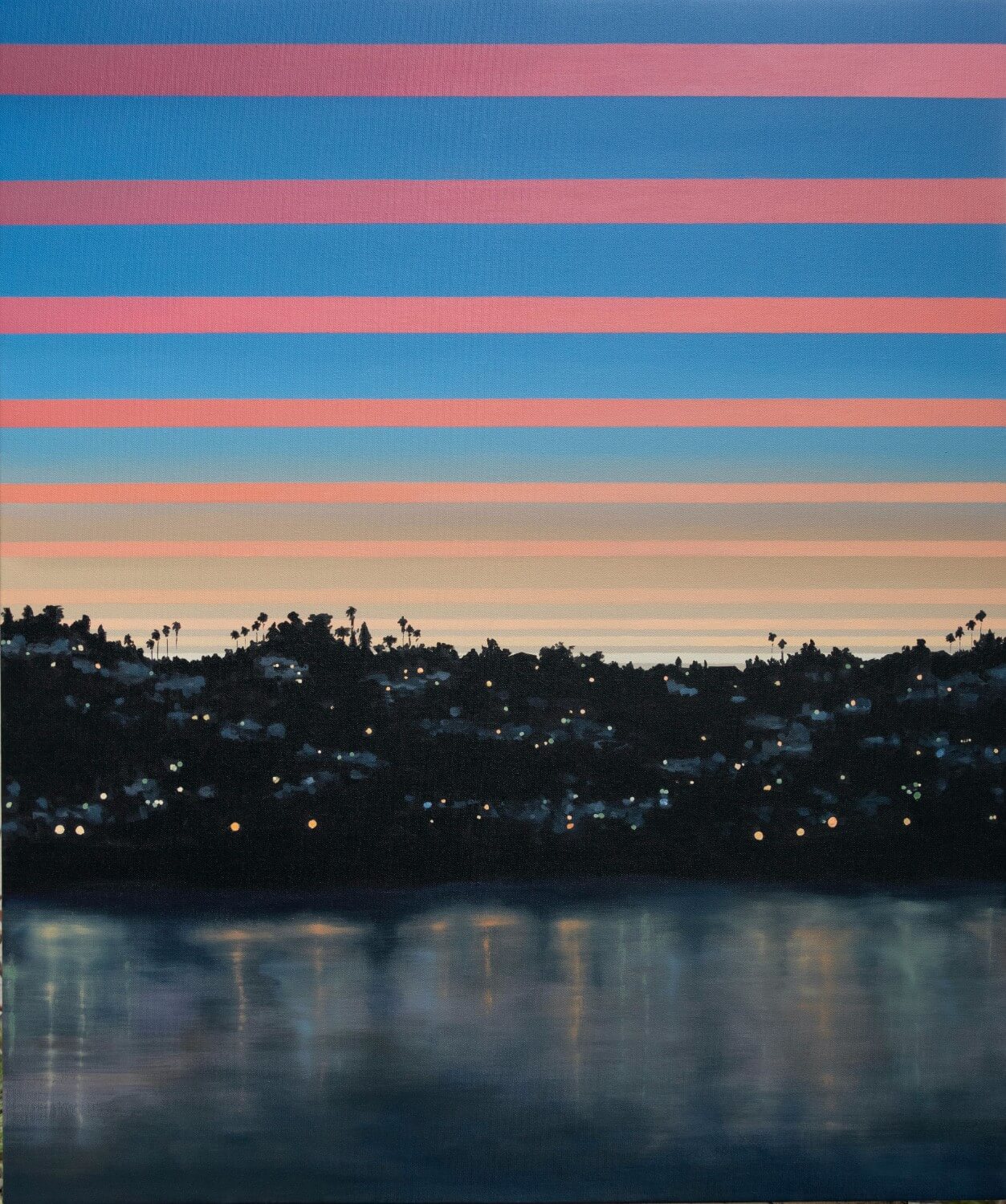
“Twilight 80 (Silver Lake)” by Julika Lackner. Photo courtesy of the artist.
Tessmer said he finds something profoundly spiritual within Lackner’s landscapes.
“There is something magical about those twinkling lights and those black hills. And there is something rational about the linearization of the sky, but also, the reverse,” Tessmer said. “One is actually what the world looks like, which is twinkling lights at night, and the other is this sort of idealized or conceptual understanding of the universe, in which there is something spiritual going on.”
According to Tessmer, to understand how the earth’s atmosphere works is to feel amazed that we all are alive to begin with. That there is a bubble of oxygen we live inside which allows us to enjoy our sunny Southern California days on this spinning rock in space feels miraculous. The gradiated skies in Lackner’s paintings remind Tessmer that that atmosphere exists, and that at some point, up in the sky, that bubble disappears into something larger than any of us.
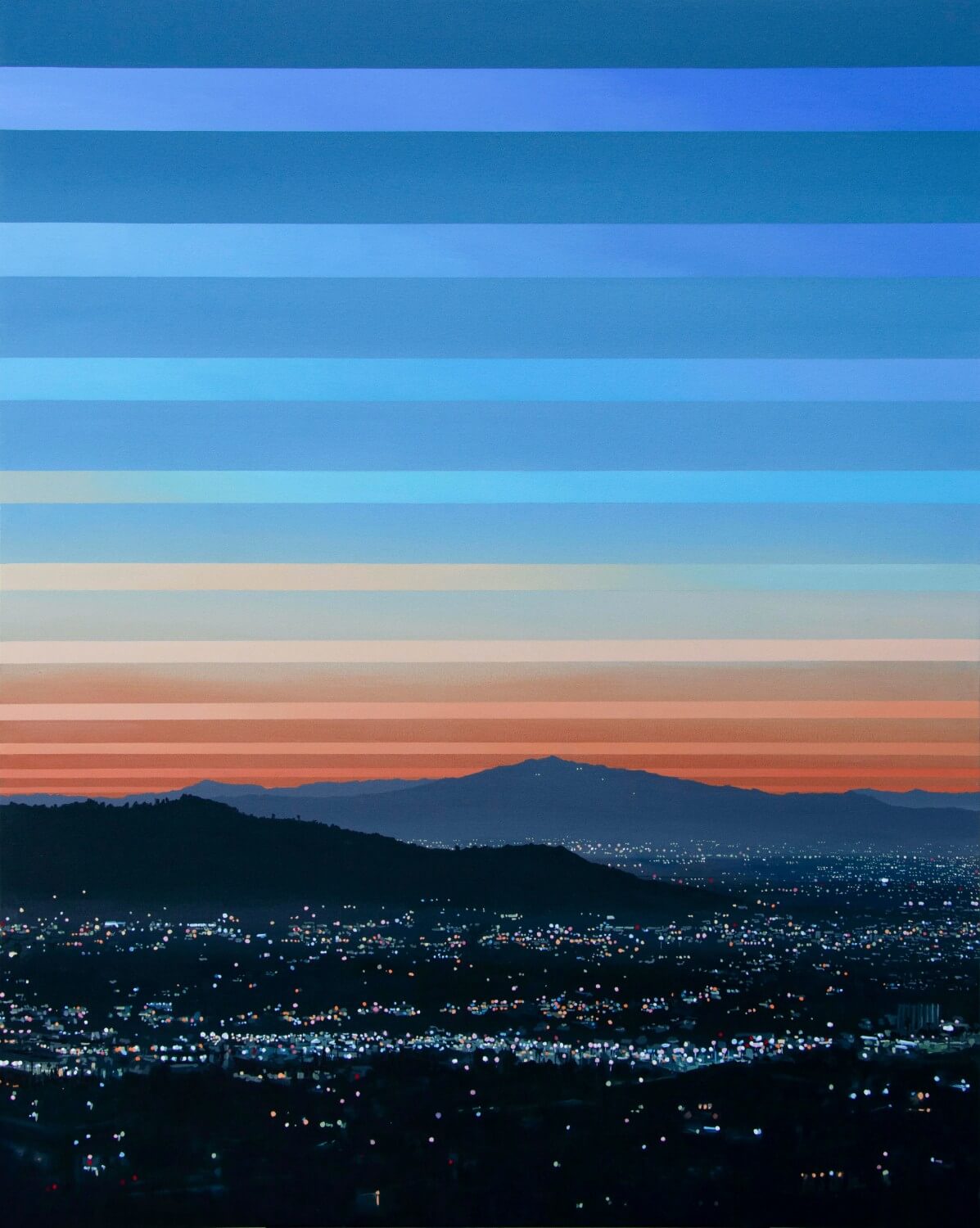
“Evening Mile: The Paintings of Julika Lackner” is on display Jan. 29 to May 1. Forest Lawn Museum is open Tuesday to Sunday 10 a.m. to 5 p.m. and is located within Forest Lawn-Glendale (1712 S. Glendale Ave., Glendale, CA 91205). Enter the main gate on Glendale Avenue and follow signs to the top of the hill.
![]()


































